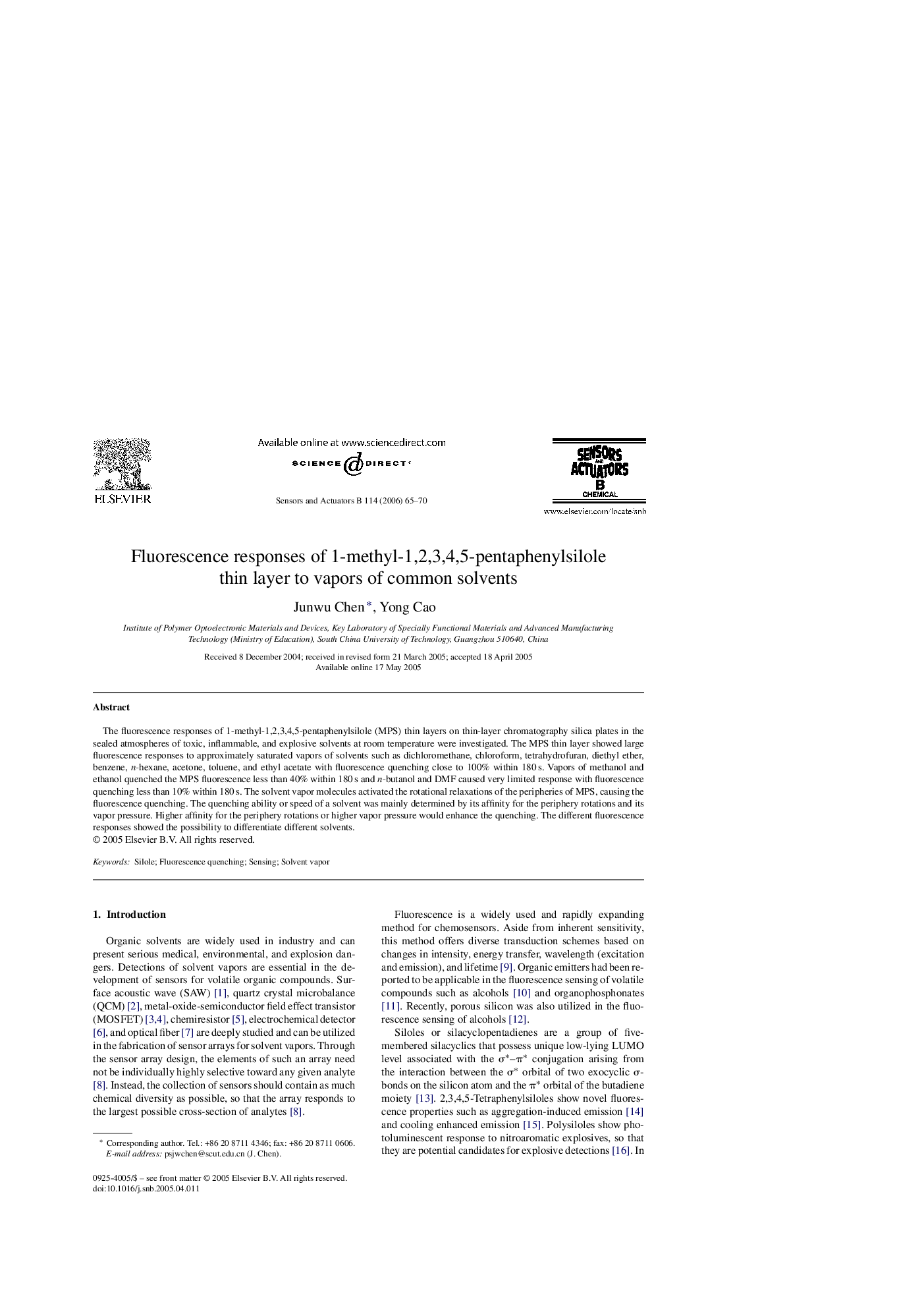| Article ID | Journal | Published Year | Pages | File Type |
|---|---|---|---|---|
| 751741 | Sensors and Actuators B: Chemical | 2006 | 6 Pages |
The fluorescence responses of 1-methyl-1,2,3,4,5-pentaphenylsilole (MPS) thin layers on thin-layer chromatography silica plates in the sealed atmospheres of toxic, inflammable, and explosive solvents at room temperature were investigated. The MPS thin layer showed large fluorescence responses to approximately saturated vapors of solvents such as dichloromethane, chloroform, tetrahydrofuran, diethyl ether, benzene, n-hexane, acetone, toluene, and ethyl acetate with fluorescence quenching close to 100% within 180 s. Vapors of methanol and ethanol quenched the MPS fluorescence less than 40% within 180 s and n-butanol and DMF caused very limited response with fluorescence quenching less than 10% within 180 s. The solvent vapor molecules activated the rotational relaxations of the peripheries of MPS, causing the fluorescence quenching. The quenching ability or speed of a solvent was mainly determined by its affinity for the periphery rotations and its vapor pressure. Higher affinity for the periphery rotations or higher vapor pressure would enhance the quenching. The different fluorescence responses showed the possibility to differentiate different solvents.
